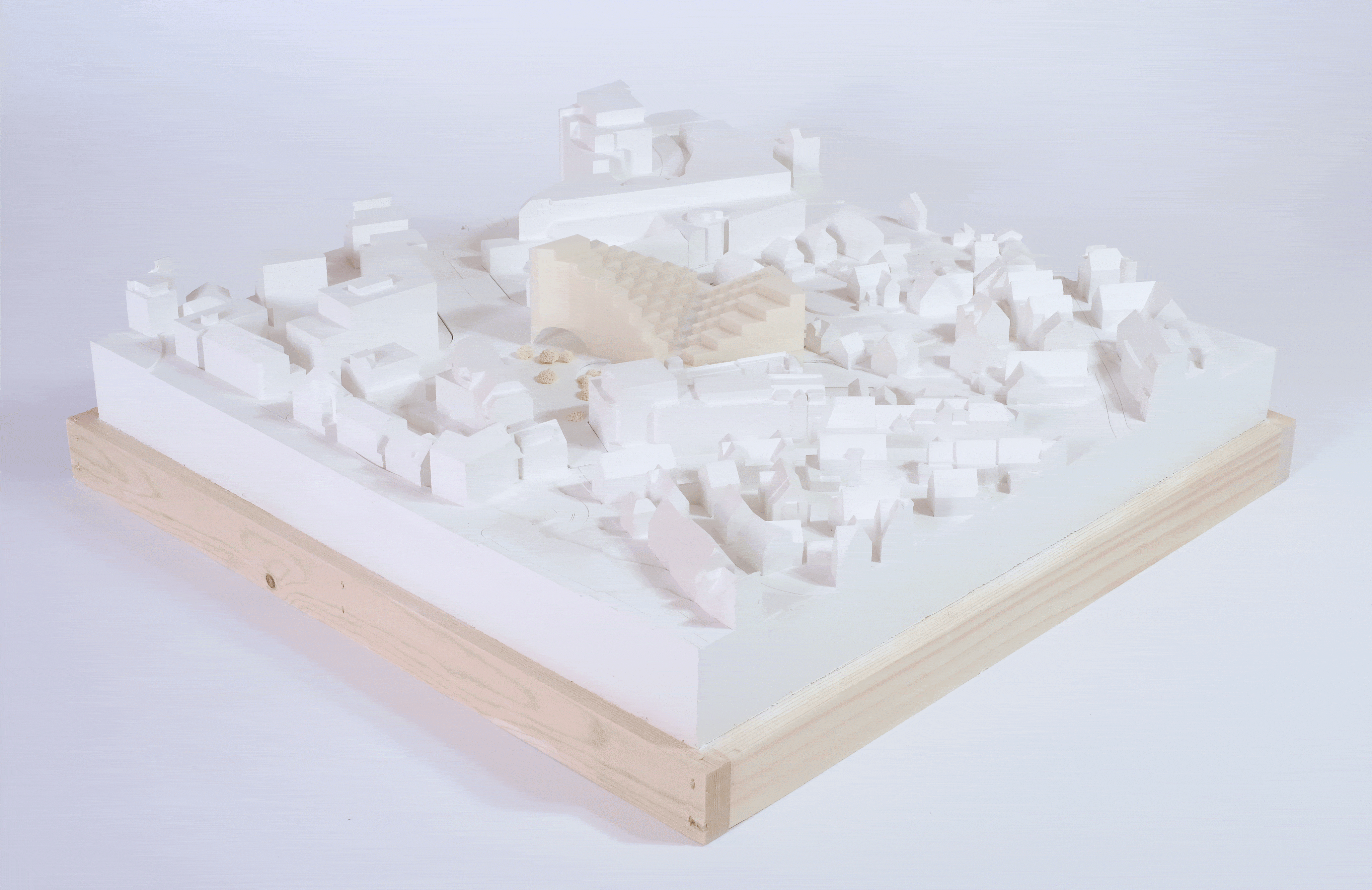
Concept of a hybrid multi-functional block
| Location | Sindelfingen, Germany |
| Year | 2022 |
| Status | Closed competition |
| Client | Stadt Sindelfingen, IBA'27 GmbH |
| Program |
Cultural civic centre with concert hall and a green courtyard, offices, dwellings |
| Area | 11.270 m2 |
| Team | Jola Starzak, Dawid Strębicki, Ewa Loos, Agnieszka Grzemska, Olga Strzałkowska |
| In collaboration with |
Pracownia Architektury Krajobrazu Marta Tomasiak |
The new hybrid-multifunctional block offers a user-friendly, elegant solution and also - in a more fundamental sense - an answer to the question how we want to live in the future. As a part of the International Building Exhibition 2027 in Stuttgart City Region (IBA’27), the new development arises from a strategy for generating a mix of uses that ensures durability, resilience and proximity in the urban scope.
The new building is located at the southern entrance to Sindelfingen's Old Town's pedestrian area and serves a hinge function in the inner-city structure. The curved exterior shape of the Eastern façade offers an inviting entrance to the area, while new public outdoor spaces are created on the North-West and North-East sides, opening up this part of the city and linking it with the spaces of the culture-and-civic centre on the ground floor. The new open spaces create a friendly urban atmosphere and feature furniture and greenery that invite people to linger in the area and generate a sense of connection with the new place. The ground floor is publicly accessible and on one level with the surrounding street space, so that interior and exterior are naturally linked. The ground floor serves public uses such as the culture-and-civic centre, commercial spaces, galleries and workshops, while the first floor houses offices and a small part of the culture-and-civic centre. The floors above consist of dwellings and terraces.
The cascading form of the building provides a new focus in the urban space and gives character and identity to the neighborhood. In addition, the staggering of storeys offers functional advantages for the living spaces on the upper floors. The rooms can be optimally lit while each residential unit has a spacious green terrace. The modular structure of the building allows for a wide range of typologies, flat sizes and different living formats such as cluster living, small studios that can also be used temporarily, classic multi-room flats etc., thanks to which great flexibility of use is offered. The project proposes approximately 70 residential units, each with its own terrace and an underground parking space.
The aim of the open space concept is to create a sustainable and green environment that supports the uses of the ground floor and integrates it with the existing urban fabric. Water becomes an essential component of the landscape. Therefore, we propose to open the Schwippe river (which currently is redirected underground) as a visible element along the Northern and Eastern border of the plot. New trees are planned around the building. There are also smaller groups of trees, shrubs, plants and rain gardens at the ''Green Square'' on the East side to buffer rainwater in a sustainable way. The green islands in the Square provide intimate areas to sit and rest. Such green climate buffers prevent heat islands, retain rainwater and provide habitats for local flora and fauna. Green roofs (terraces) are created to improve the microclimate in the highly built-up area. The entire area is fully accessible for pedestrians and bicycles, with a network of paths and squares meandering around the buildings and through the green space. The new design of Mercedesstraße (on the East border) offers a generous street space for pedestrians from the nearby train station, through designed Green Square, into the market square and the old town.
Both the shell and the façade are largely designed using timber construction. This is not only due to its excellent ecological balance, room atmosphere and climate: timber construction also stands out due to its high degree of prefabrication and the short construction time on site. The regular and simple grid-structure of the building also contributes to such choice of construction material. Spatial adaptations can be made easily, while the architectural identity-forming appearance remains intact. On the roof there are areas for photovoltaic panels in combination with extensive roof greening.







